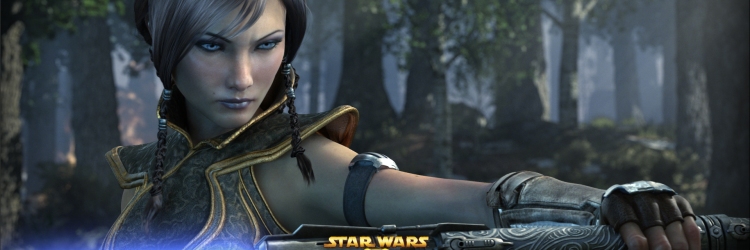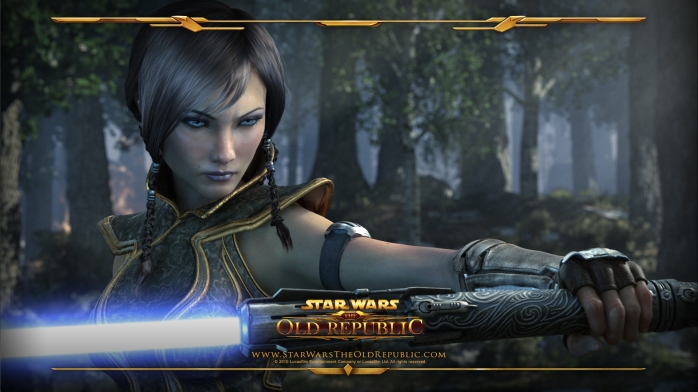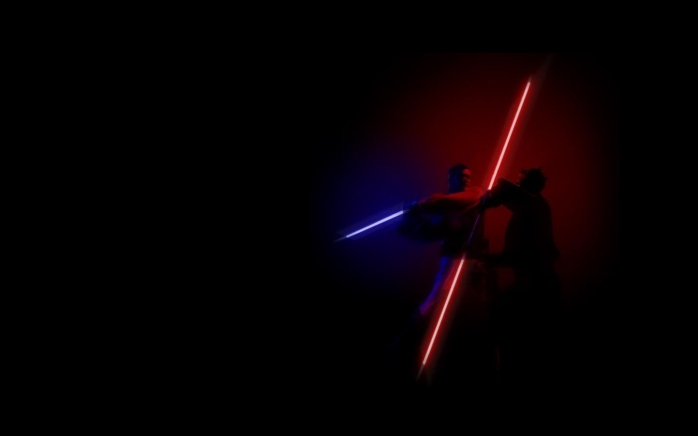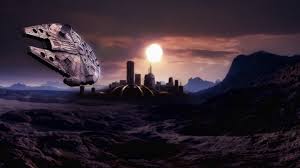On December 20, 2011, BioWare released Star Wars: The Old Republic, a universe filled of Jedi, Sith, jawas, Imperial or Republic scum (depending what side one is fighting for), and much more. Taking place about 3,500 years before the Star Wars universe most known of from the movies, characters are taken on a path between the dark side and the light side. BioWare has “managed to merge high production value story scenes with MMO gameplay” and it serves to be highly narrative. Because of this fact, it utilizes the hero’s journey and the archetypes observed by Carl Jung, just as George Lucas’ Star Wars films do as well. One review mentions how truly only one class of the eight available to choose from does NOT “have a movie archetype behind it”, the imperial agent (Peterson). Otherwise, the archetypes are undoubtedly present.
Archetypes, defined by Carl Jung, are the “patterns of personality that are the shared heritage of the human race” and are “amazingly constant throughout all times and cultures in the collective unconscious” (Peterson). Although the game utilizes archetypes of the hero’s journey, the involvement of the gamer and his or her ability to choose keeps the game from being a straight forward example of Joseph Campbell’s twelve step hero’s journey (“Examples of Each Stage of a Hero’s Journey”). Although a very extensive game, archetypes are obvious early on, from the hero, the shadow, the mentor and the herald.
First there is the hero, the main archetype with the main objective to “protect” and “serve”. Upon choosing the side of the Republic, if chosen, the Jedi will fall into this archetype. The character, although controlled by a gamer, is put into the game to protect and serve the Republic, the light side, in any way by fulfilling the missions. In the beginning, one’s Padawan character has the choice to be quite full of oneself, feeling chosen and possessing a swollen ego. This, of course, is quite typical of the hero archetype. Until the character begins to grow some humility, progression feels slow as the Padawan clashes with mentors and those leveled above him or her. SWTOR manages to upkeep the Jedi as a hero figure despite the ability to make “dark side” choices. In fact, upon choosing dark side choices as a Jedi can almost nearly slow down progress, as if imposing a hero’s downfall, to influence a redemption stage. To be more specific, “your light side/dark side level determines access to certain gear”, so if one has made too many dark side decisions, certain weapons normally more accessible to Jedi of the Republic would not be (VanOrd). Then also, if such hero archetypes are part of the “collective conscious of a culture”, wouldn’t one who chose to be a Jedi Knight or Consular naturally want to protect and serve? Yet the decisions are available, because even the hero archetype calls for the hero to have flaws and weaknesses (such as the ego mentioned earlier), be human essentially, and because of that, mentors are needed.
No Jedi is simply born with the title, it is earned. The Jedi character in SWTOR starts off as a Padawan with limited abilities and a Jedi Master as their mentor, their trainer, their guidance. As a Jedi, one’s character starts out with a Jedi Master to mentor him or her. It is said that a mentor “stands for the hero’s highest aspirations”, which makes sense being that as choosing the Jedi storyline, one is aspiring to become a Jedi Master eventually. Master Yuon Par is the name of the master of those who choose the storyline for the Jedi Consular. She offers advice to the Padawan, giving them missions that will help the character level up and grow in the narrative, closing in to becoming a Jedi. Master Yuon Par serves as the Yoda figure for the Jedi Consular. And as is typical for the hero’s journey, Yuon Par nurtures the character up until he or she becomes a Jedi and then suddenly falls ill. This progresses the narrative for the Jedi Consular as one is then shipped off to another planet, now a Jedi, to find why Yuon Par has fallen ill. In a way, it serves as a call to action for this specific storyline, as the new Jedi must now jump into a hero’s shoes without the help of the mentor as much.
Yet the hero is not only pushed through the narrative by a mentor, there are also heralds. Heralds do not actually always take the form of an actual person, but rather the form of an object. A herald issues “challenges and announces the coming of significant change”. A very significant herald in SWTOR is when a Jedi Knight creates his or her light saber. Upon receiving such saber, one’s character has a swell in power because of possessing a much more powerful weapon and in fact, battles right after receiving this. It is easy to see how fighting changes once possessing a lightsaber, and from there on out, things will not be the same. It symbolizes a new sense of responsibility, an even greater call to serve and protect the Republic.
Another herald in the game is when one’s character receives his or her own ship. Although Sith may not be considered a hero because of how the character must advance with deception and killing, a Sith warrior receiving his or her ship for the first time symbolizes a great change just as much as the Jedi storyline. Yet since the Jedi Knight best fits the hero archetype, the focus shall be put there. The ship is given as fairly soon after he or she receives his or her title as an official Jedi, no longer a Padawan. It certainly does issue challenges because it gives the ability to travel to other planets that help progress the narrative, and these planets are challenges, as they are higher levels than the starting planet of Tython (for Jedi). It also symbolizes a greater responsibility for the character, now being the captain of a ship. It expands one’s responsibilities over the SWTOR universe, no longer limited to one planet.
Although the Sith warrior may not be considered a cultural hero, if one picks that side, suddenly cultural norms are switched and is, in a way, the hero of the storyline. Upon stating that, a herald for both Sith classes is when the character kills his or her own master. It signals a new sense of power and that one is no longer dependent on the master. Killing his or her own master is considered something to advance the storyline, for the Empire follows a whole different set of rules, where deception, flirting and killing is acceptable and encouraged.
Simply the choices available to a player in SWTOR shows an archetypal presence. Most often, the choices to respond to another come in three options, “kind”, “neutral” and “mean” (VonOrd). From the light side point of view, the dark side decision would represent “the shadow”, an archetype identified by Carl Jung that encompasses one’s weaknesses or one’s “darker side…representing wildness, chaos and the unknown” (Cherry). Examples would be when one is given the option to expose two Padawans that are in love, something considered wrong and a distraction in the eyes of the Republic for Jedi. Three options are available: one is to expose them and tell them it is a distraction to the way of the Jedi; another is to scold them; then lastly there is the option to keep them a secret if they provide a bribe. The “shadow” choice would be the last one, giving into bribery, a darkness. Positions on the Empire’s side, such as the Sith, would consider such choices as the correct one, as the Sith character envelopes the typical enemy or bad guy.
There are far more archetypes in the narrative of SWTOR, but because of the great extent of storylines and various choices, only a few could be named. Within the SWTOR universe, the very well-known archetypes of the Star Wars films, live on through the characters and put the player right into the hero’s journey. “You’ll find” archetypes “in all of the most satisfying literature” and perhaps that is why Star Wars: The Old Republic has been such a success, taking players into situations of free will and somehow still playing out the typical actions of the archetype their character envelopes.
——–
*SWTOR is an astounding and compelling PvP video game that is definitely worth investing the time in to play. Download SWTOR to your computer now and explore the incredible universe of The Old Republic.





